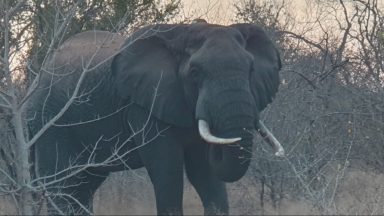It’s been an exciting few months for Zinave National Park in Mozambique with the recent addition of 19 white rhinos. The historic introduction of these near-threatened mega-herbivores has seen the first founder population of white rhino in Zinave in over four decades. Thankfully, the good news doesn’t stop there! Seven critically endangered black rhino are coming too.
With the white rhino having adjusted to their new home rather successfully – so well in fact that a baby rhino girl was born into the herd just a couple of months ago – Exxaro Resources, Peace Parks Foundation and Mozambique’s National Administration for Conservation Areas (ANAC), have once again joined forces in relocating seven critically endangered black rhino from a reserve in South Africa to Zinave National Park.
Much like the other four rhino species across the world, the demand for rhino horn in Southeast Asia has left the black rhino population in a critically endangered status. With their numbers in dramatic decline, governments, NGOs, individuals and private companies have stepped up to the overwhelming challenge of increasing population numbers to ensure that this iconic species is safeguarded for generations to come.
But before we reveal too much of this journey, let’s rewind to the beginning, where a lot of planning, preparation and handling unforeseen challenges had to take place before these rhinos could call Zinave ‘home’.
Catching Black Rhino
Back in South Africa, it’s all systems go as the team heads out to locate two black rhino bulls in Lapalala, a neighbouring reserve. They are to be swopped out with two rhino bulls from Manketti in what is known as a ‘genetic exchange’. This is to ensure that the new founder population in Zinave will benefit from fresh genetics being introduced into the crash.
Once located, they are darted from the air, and when the rhino is completely down, it is safe for the teams on the ground to move in. The animal is blindfolded, and earplugs are placed in his ears to minimise sensory stimulation to keep the animal calm. He is then given a partial reversal drug to wake it up just enough to get it to walk (or bolt!) in the crate. He is then loaded onto a truck and released into a temporary holding facility, or boma, for a few weeks before moving it to where the rest of the crash would be held before the translocation. This is so that the vets can monitor their condition to ensure they are fit to endure the long journey ahead.
But as with most things in conservation, things didn’t quite go as planned!
A Vanishing Act
After one textbook darting and loading operation, the next black rhino wasn’t quite as easy a customer. After trying to escape from the crate, the bull had to be tranquilised to ensure his and the team’s safety. If he hadn’t caused enough chaos already, the team awoke the following morning to an empty boma with a rhino-sized hole in one side. Luckily, the team was swift to act and managed to recapture the bull, this time taking it straight to Manketti’s more secure holding facility.
This was just one of the many bumps in the road that the team managed to navigate successfully.
Stay tuned to Peace Parks TV this week as we follow along on this exciting black rhino translocation journey.

